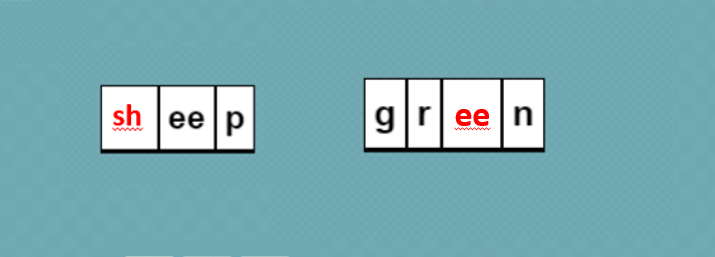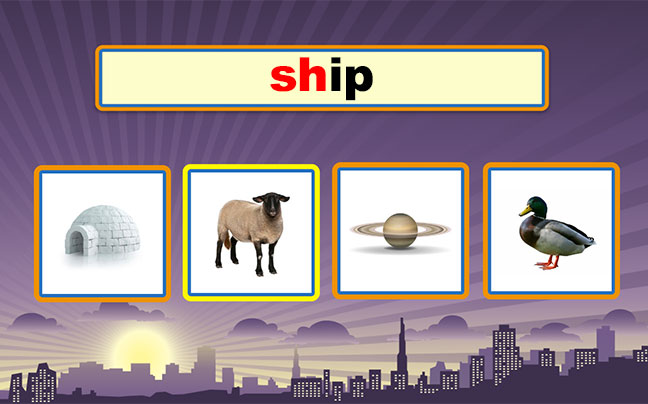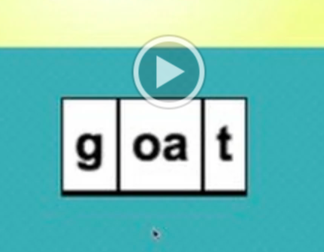Even as we rolled out SpellingCity, teachers and literacy coaches asked us to provide the same flexible practice tools to focus not just on spelling but on recognizing and working with sounds. They asked for help not just with the spelling of words but with learning phonics and building phonological skills. So we decided to help students construct and decode words by working with the sounds and the letter blocks that represent them.
help students construct and decode words by working with the sounds and the letter blocks that represent them.
The idea was simple: We wanted to treat words like “tooth” as three blocks of letters which correspond with the three sounds: T, OO, and TH. But, as we searched, we could NOT find a system which mapped the sounds in words to the way the words are spelled. At first, this seemed unbelievable. Surely, in some university or research center, somebody had created a mapping which connected all the common English words into their sounds and mapped those sounds to the letters used to spell the words.
We spoke to a lot of people which confirmed our initial findings. This mapping did not exist. Dictionaries, for instance, routinely have a phonetic spelling of words using various systems for writing phonics. But none of the dictionaries mapped the sounds back to the actual spelling of the words. Nobody had ever done this.
Our vision came from watching endless tutors, teachers, and parents help students by pointing at a few letters in a word and having the student say the sounds that those letters created. We watched teachers help students read the sounds to decode the word and then blend them together to write them.
So, we decided to create the VocabularySpellingCity Phonics system, a novel contribution to literacy. The phonics system can be used for building a variety of prereading phonics-related skills including phonological skills, phonemic awareness, and spelling skills. Since we knew we had created something original and valuable, we started talking to lawyers. We decided in 2015 to file for a patent on our original system. We started with two provisional patent filings.
Our permanent patent is number 10,387,543, issued on August 20th, 2019. It’s called a “Phoneme-to-Grap
hemes Mapping Patent”. It’s a utility patent covering our original method for algorithmically mapping the sounds in English words to the letters. The patent grant is both a recognition of novelty, a recognition of usefulness, and a grant of intellectual property ownership.
What is Phoneme to Grapheme Mapping?
Phonemes are the basic sounds of the English language. Examples of phonemes from the word “cheek”, would be: CH, EE, K.
Graphemes are the use of letters to express these sounds. In English, here are three different patterns of how sounds (phonemes) are expressed by letters (graphemes):
- Some sounds are created by a single letter, for example, the T is “ten”. T almost always sounds the same (unless it’s in a combination with another letter like H).
- Some sounds such as the long E sound can be spelled a number of ways including a double E, an E followed by an A, an E followed by a consonant followed by an E which is at the end of a word, a y at the end of the word, and an EY at the end of the word.
- Some letters, like the S, can usually sound one way, like in sound, and sometimes sounds quite different, like in sugar (where it makes the SH sound)
So how can this technology help?
Students can hear and see the sounds by mousing over the sounds in each box of VocabularySpellingCity’s Interactive Phonics Boxes. Many classrooms have students first work on recognizing the initial sounds where the Sounds Boxes are used with images to match initial sounds.
The patent holders who are current VocabularySpellingCity employees are John Edelson, Obiora Obinyeluaku. and Kris Craig. For commercial purposes, the patent belongs to VocabularySpellingCity.

Holders of Patent 10,387,543 (current employees)
Activities with Interactive Sound Boxes (that use this technology): Sound It Out, Initial Sound Speller, Final Sound Speller, FlashCards, Word Study (available for logged-in students) and TeachMe More.
Sound-Based Activities for Phonological and Phonics Skill Development: Which Initial Sound?, Which Final Sound?, Initial Sound Speller, Final Sound Speller, SillyBulls, Sound It Out, FlashCards, Word
Study and TeachMe More.

John Edelson at the US Patent Office

The Sound Counter Helps Students Focus on Distinguishing Sounds, Building Phonological Awareness


